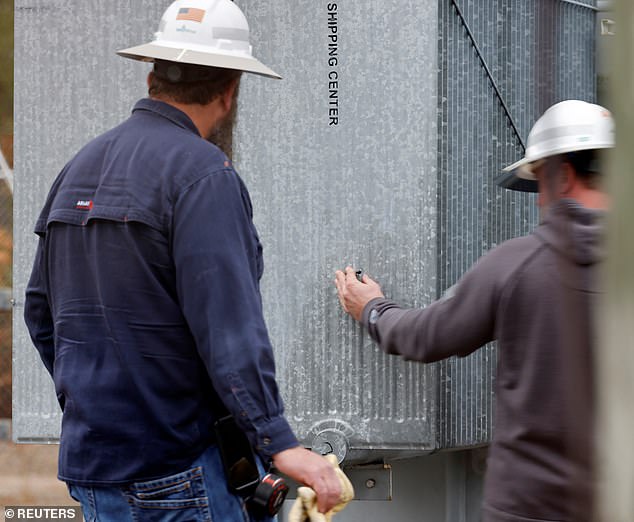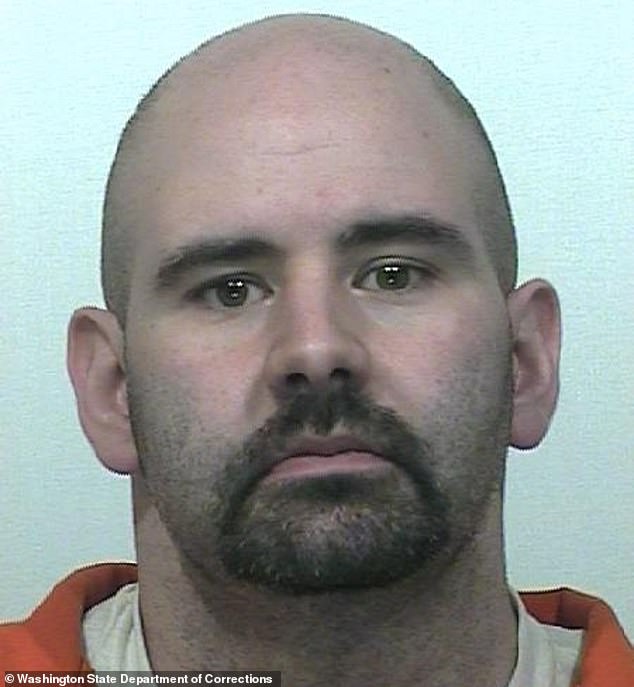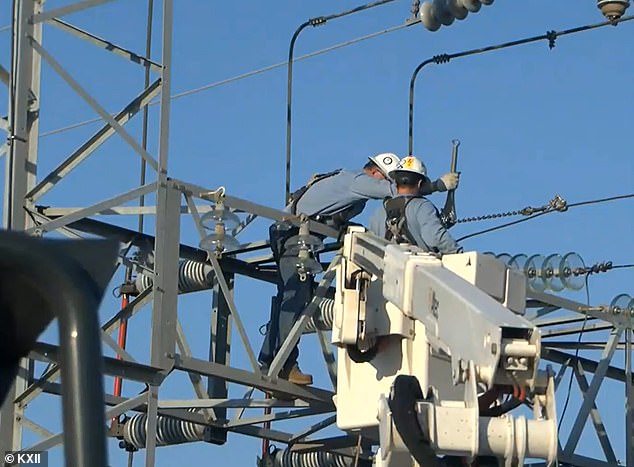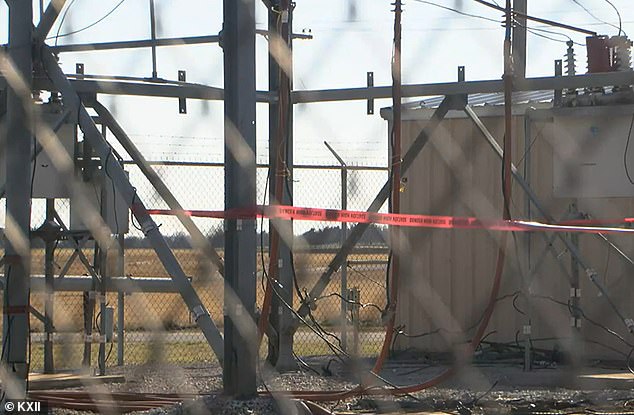The US power grid was physically attacked 107 times in the first eight months of 2022
>
The US power grid was physically attacked 107 times in the first eight months of 2022, more than in any other year in the last decade.
The damage, caused mostly by gunfire, led to power outages affecting tens of thousands of Americans.
Now, security experts are warning that the probability of a more significant attack is higher than ever, one in which domestic terrorists could cause a blackout that lasts for weeks, affecting entire parts of the country.

Duke Energy workers inspect what they said was one of three bullet holes that paralyzed an electrical substation after the Moore County sheriff said the vandalism caused a power outage.
“If you have a physical attack that damages equipment, it can take weeks, months, or years to replace that equipment,” says Michael Mabee, a former US Army command sergeant major and an expert on power infrastructure vulnerabilities. told Newsseek.
“If enough of these transformers were to be destroyed in a physical attack, we would have a large-scale, long-term blackout, and deaths would be in the tens of thousands, hundreds of thousands or millions,” he added.
Although for many of these attacks those responsible have not been identified. However, Newsweek identified manifestos and manuals produced by radical groups across the county that detail how such acts of sabotage can be coordinated.
An intelligence memo issued in October by the California State Threat Assessment Center detailed dozens of examples of radical domestic plots. Many were associated with neo-Nazi and far-right groups that see the county’s vulnerable power grid as a means to cause chaos.
More than a decade ago, the Federal Energy Regulatory Commission noted the vulnerability of the grid, saying that damage to nine substations and a home transformer manufacturer could bring the entire US power grid to a standstill for 18 months.


A bullet hole in one of Moore County’s substations that knocked out power to nearly 50,000 people.


Many of the attacks on electrical infrastructure have been linked to domestic extremists.
On December 3, attacks on two substations in Moore County, North Carolina left nearly 50,000 people without power for days. But that may have just been a small warning of what could be.
“I was very, very worried, extremely worried, in 2013,” Jon Wellinghoff, head of the FERC at the time, told Newsweek. “And I would say, after Moore County, I’m still extremely concerned.”
He warned that there are still “a limited number of critical nodes within the US network that could have serious consequences” if they are damaged. “The threat is real,” she told the publication. “Americans should be worried.”


Emily Rainey, a former Army captain, told police the damage was caused by God, who was “punishing Moore County” because a drag show was being put on nearby at the time.
Days after the Moore County attacks, authorities were investigating former Army Captain Emily Grace Rainey, who led a group during the Jan. 6 riots and is also a director of the Moore County Citizens for Freedom group.
After a Facebook post indicating that he knew something about the attack, Rainey told police that he was implying that the damage was caused by God. who was “scolding Moore County” because a drag show was being put on nearby at the time.
Just a few weeks later, in December, on Christmas morning, around 14,000 people lost power after a variety of attacks in four different cities in Pierce County, Washington.
Matthew Greenwood, 32, and Jeremy Crahan, 40, were arrested and charged with conspiracy to damage power facilities and possession of an unregistered firearm.


Jeremy Crahan, 40, was one of two men arrested and charged with attacking Washington state power substations over Christmas.


Workers make repairs after an act of vandalism left thousands of people in southern Oklahoma without power in March.


In March, a shooting at an electrical substation in Oklahoma (above) temporarily knocked out power to more than 1,000 customers.
In the past few months, more than six substations have been vandalized in both Washington and Oregon, including a failed attack in the early hours of Thanksgiving.
In early February, three white supremacists were arrested for planning to attack power grids in an attempt to stoke racial divisions. Their ploy involved fentanyl-filled suicide necklaces and assault rifles.
In March there was a shooting at a Red River Valley Rural Electric Association site in southern Oklahoma that left 1,200 people without power and resulted in a large oil leak. A transformer had to be replaced, which usually costs between $800,000 and $1 million.
In July, shots were fired at a transmission site in Wasco, California, causing power outages and leaking hundreds of gallons of hazardous chemicals into nearby soil.
That same month, a transformer serving the Keystone pipeline near Huron, South Dakota, was torn apart, slowing the oil artery’s operating rate. Few details have been released about that incident, with officials saying only that the transformer was “vandalized” in a “deliberate act.” The FBI is investigating.
On November 11, a substation near Maysville, North Carolina, went offline after it was damaged in a vandalism incident, according to the Carteret-Craven Electric Cooperative, which operates it. More than 12,000 members of the Carteret-Craven cooperative were without power for approximately two hours.


Mohammad Mesmarian, 34, was arrested for allegedly ramming his Toyota Camry into a generator pit and setting it on fire to damage the Invenergy solar plant in Las Vegas.


Mesmarian (above) was arrested 30 miles from the crime scene. Police said he told them he attacked the plant ‘for the future’
In early January, a man was charged with terrorism after police said he crashed his car into a Las Vegas solar plant and set it on fire.
Police responded to a call about a trespasser at the Invenergy solar plant north of Las Vegas Motor Speedway, and when officers arrived, they found a burning car in a generator pit.
Las Vegas Metropolitan Police alleged that 34-year-old Mohammad Mesmarian broke into the plant and set his Toyota Camry on fire as he sat and watched the fire. He reportedly told police that he had burned the car at a Tesla plant and that he did it “for the future.”
Legal constraints also make it difficult to create a more resilient network. “The regulations for physical security and cyber security are not written by any federal regulator,” Wellinghoff added.
“Instead, they are written by the utilities themselves, and those regulators can only adopt or reject them.”
